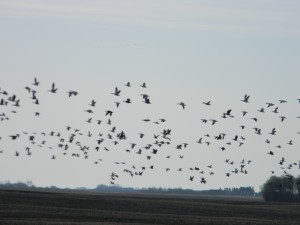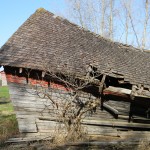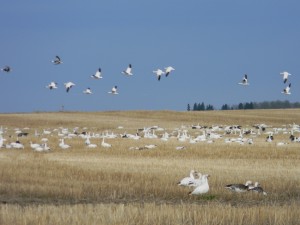O’ Death,
Won’t you spare me over til’ another year
But what is this, that I can’t see,
With ice cold hands taking hold of me.
– traditional American folk song
Take the nihilistic assumption that humans are in the process of dying the moment they are conceived. Everything our bodies do is to maintain the process of surviving through creating, maintaining, and eliminating. Start messing with the supply chain, the fuel,the equipment, or the director, and the body has a problem.
If you can get it back up and running, good. If you can’t…things don’t shut down right away. Death is a process.
But how what exactly IS death? What does that look like?
The line between “alive” and “dead” is getting more and more blurred as we advance in technology. At this moment, different countries and different people define death differently. Ultimately, if the person in your story isn’t moving, breathing, and has no pulse, they’re probably going to go in the ground after a few minutes of being like that, since the brain damage sustained and the medical technology available is probably not going to get them to any livable state.
But what if you could? What would that look like?
“Not breathing.”
I can hold my breath; Am I dead? I can be choking or in laryngospasm when drowning; Am I dead yet? No? I can still have a pulse even if I’m not breathing, right?
“No pulse!”
Through chest compressions I can pump your heart for you and give you a pulse. I can run it through a machine and pump it indefinitely.
“No…self-initiated pulse?”
No pulse doesn’t mean the heart isn’t working at all, and you need an EKG (electrocardiogram, or a “heart strip”) read by a trained person to tell the difference between “ineffective pumping” (therefore not producing a palpable pulse) and “heart isn’t showing any electrical activity at all” (asystole, or ‘flat line’).
You could be in atrial fibrillation, which is basically the heart jiggling itself like jello. It could be persuaded to pump again, given a good shock to reset it. Why do you think they call those chest-paddles “DE-fibrillation”?

Note: You cannot use a defibrillator on someone who is “flat-lined”, or in “asystole”, where there is no electrical activity in the heart. You can’t de-fib when there’s no fib. You can’t reset a rhythm that doesn’t exist. You start CPR when you hear that flat-drone, or don’t get a pulse. Put the paddles down your doctors would know better.
In some countries, death is defined as no self-initiated pulse. Even in the US, if you can’t get the pulse back after CPR (if the patient didn’t have an Advanced Directive against it and weren’t considered “DNR: Do Not Resuscitate”), the doctor will generally call it (and the doctor has to call it, not the nurse).
There’s some wiggle room though. Even in asystole, the brain may still have electrical activity.
…Remember how I said that everything is breaking down, and that this is guaranteed?
Well you can slow it. You can delay it. You can even potentially reverse it (for the most part).
Since all things are made of cells, and cells are made of parts, and those parts are made of chemicals, and those chemicals are made of atoms, and those atoms are made of….well, they’re always moving. Even solids, like a table, are always constantly shaking. In place, but, moving. Everything is in motion in some way. If you slow that down, reactions don’t happen.
If you heat up a body, things start to break down faster. Fever can be dangerous because it can “denaturate proteins”, which means, it’s so hot, hot means moving fast, moving fast means shaking apart, breaking down.
So what happens if you cool a body, such as in cryogenics?

Things slow down. Do it too slow, such as hypothermia, the damage won’t be stopped. The body is mostly water, so ice crystals can form and burst cells, circulation is cut off, essentially leaving the limbs for necrosis (and gangrene to set in).
But in people who have been cooled quickly, instantly almost, the process the body goes throu-…
Okay let me back up even more. Oxygen is required for a lot of the body’s processes. There is such a thing as a “reperfusion injury”, where oxygen is introduced to an area deprived, and suddenly it has all this…currency with which to pay the men to start destroying things.
“But it has oxygen! I thought that was a good thing! Shouldn’t it be happy?”
Yeah, but remember, the body is a jerk, and runs more like a bureaucracy. The paperwork had already gone through, they just ran out of ‘money’ on the project. So no oxygen, no currency, no processes. This can cause damage.
But if the body is cooled properly, it’s too slowed to actually do anything even if it has the currency of oxygen. It’s stuck in a stasis.
Some success has been made with patients who were quickly frozen by the environment or strategically frozen when in critical condition. We pull them back with slow warming and controlling and staying ahead of the destruction. One step back, two steps forward.
Imagine this for your story:
“Red” triaged patients who would normally be tagged ‘black’ (“don’t bother”) frozen to halt the death process until an appropriate level of care can be arranged.
A hospital that is overrun with casualties that can’t reasonably stabilize everyone without putting a few ‘on hold’.
A cryogenic chamber that flash-freezes and slowly warms the patient up to bring them back after space-travel or ‘until we have the technology to treat your condition’.
So here’s the million dollar question:
If we can pull them back, if CPR, cryogenics, and just…act of god for all we know, can make them alive again, were they really dead? And where is that line?



